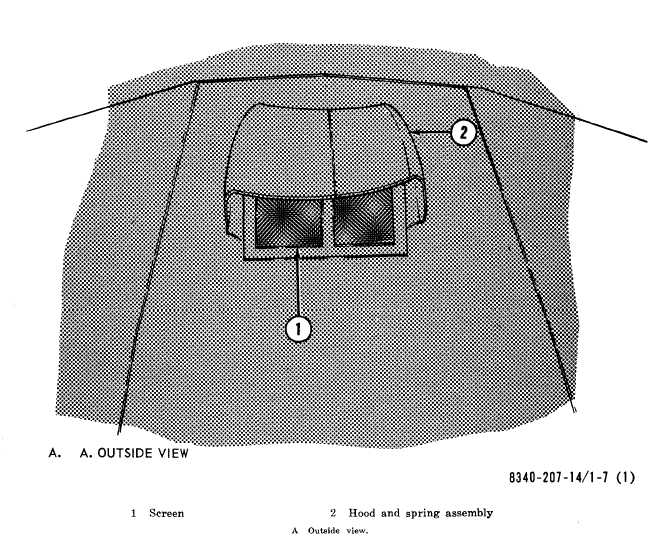Figure 1–7. Ventilator
the chain bolt control rod (10) that holds the
chain bolt to the strike plate, and by pulling
the door control arm rope (15) to activate the
door control arm (2) and the diagonal door
control arm (1).
1-5. Tent Sections
a. General. The tent sections are the end and
intermediate sections of the frame, which is
covered by the outer skin, Each tent end
section covers an end arch and one intermediate
arch of the tent frame. It forms an end wall
and one section of roof and side wall. Each
tent intermediate section covers two inter-
mediate arches of the frame. They complete
the tent side wall and roof. Each end and in-
termediate section has purlin flaps sewed on
the inside, at ground level. These flaps pass
1-8
assembly (Sheet 1 of 2).
under the ground level purlins on each side of
the tent frame and are secured to J-hooks on
the fabric by means of hem ropes equipped
with connecting rings. A sod cloth is sewed
to each section below the purlin flaps. This ex-
tension of the section also passes under the
ground-level purlins and lays flat on the inside
of the tent. Transverse lines or continuous
ropes, run through sleeves of each section.
These lines allow the fabric to be drawn tight-
ly against the tent frame.
b. End Sections.
(1) Each end section contains a vehicle
door, personnel door, ventilator assembly, and
two heater ducts.
(2) The vehicle door operates on a venetian
blind principle. Four metal door spar assem-

